
The Battle of Fleurus, on 26 June 1794, was an engagement during the War of the First Coalition, between the army of the First French Republic, under General Jean-Baptiste Jourdan, and the Coalition army, commanded by Prince Josias of Coburg, in the most significant battle of the Flanders Campaign in the Low Countries during the French Revolutionary Wars. Both sides had forces in the area of around 80,000 men but the French were able to concentrate their troops and defeat the First Coalition. The Allied defeat led to the permanent loss of the Austrian Netherlands and to the destruction of the Dutch Republic. The battle marked a turning point for the French army, which remained ascendant for the rest of the War of the First Coalition.
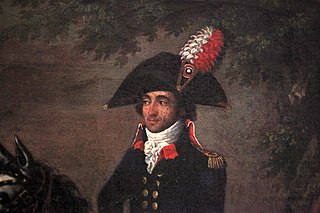
The Battle of Aldenhoven or Battle of the Roer saw a Republican French army commanded by Jean Baptiste Jourdan defeat a Habsburg army under François Sébastien Charles Joseph de Croix, Count of Clerfayt which was defending the line of the Roer River. A key crossing was won by the French right wing at Düren after heavy fighting. The Austrian retreat from the Roer conceded control of the west bank of the Rhine River to France. The battle occurred during the War of the First Coalition, part of a wider conflict called the Wars of the French Revolution. Aldenhoven is located in the state of North Rhine-Westphalia in Germany about 21 kilometres northeast of Aachen.
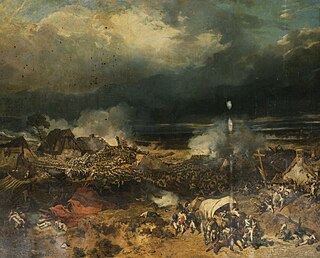
The Battle of Wattignies saw a French army commanded by Jean-Baptiste Jourdan attack a Coalition army directed by Prince Josias of Saxe-Coburg-Saalfeld. After two days of combat Jourdan's troops compelled the Habsburg covering force led by François Sébastien Charles Joseph de Croix, Count of Clerfayt to withdraw. The War of the First Coalition victory allowed the French to raise the siege of Maubeuge. At a time when failed generals were often executed or imprisoned, Jourdan had to endure interference from Lazare Carnot from the Committee of Public Safety. The village, renamed Wattignies-la-Victoire in honor of the important success, is located 9 kilometres (6 mi) southeast of Maubeuge.

Jean-Baptiste Jourdan, 1st Count Jourdan, was a French military commander who served during the French Revolutionary Wars and the Napoleonic Wars. He was made a Marshal of the Empire by Emperor Napoleon I in 1804. He was also a Jacobin politician during the Directory phase of the French Revolution, serving as member of the Council of Five Hundred between 1797 and 1799.

The Low Countries theatre of the War of the First Coalition, in British historiography better known as the Flanders campaign, was a series of campaigns in the Low Countries conducted from 20 April 1792 to 7 June 1795 during the first years of the War of the First Coalition. As the French Revolution radicalised, the revolutionary National Convention and its predecessors broke the Catholic Church's power (1790), abolished the monarchy (1792) and even executed the deposed king Louis XVI of France (1793), vying to spread the Revolution beyond the new French Republic's borders, by violent means if necessary. The First Coalition, an alliance of reactionary states representing the Ancien Régime in Central and Western Europe – Habsburg Austria, Prussia, Great Britain, the Dutch Republic, Hanover and Hesse-Kassel – mobilised military forces along all the French frontiers, threatening to invade Revolutionary France and violently restore the monarchy. The subsequent combat operations along the French borders with the Low Countries and Germany became the primary theatre of the War of the First Coalition until March 1796, when Napoleon took over French command on the Italian front.

The Battle of Sprimont, or Battle of the Ourthe, was a battle during the War of the First Coalition between a corps of the French revolutionary Army of Sambre-and-Meuse under General Jean-Baptiste Jourdan, and the left wing of an Austrian army under the François Sebastien Charles Joseph de Croix, Count of Clerfayt. The battle was fought to outflank and force the Austrian army away from their defensive line on the Meuse river, and was a French victory.
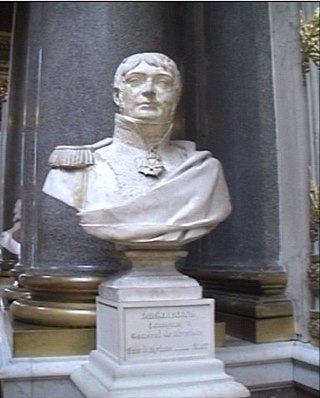
Jacques Desjardin or Jacques Jardin or Jacques Desjardins; enlisted in the French royal army as a young man and eventually became a sergeant. During the first years of the French Revolutionary Wars he enjoyed very rapid promotion to the rank of general officer in the army of the French First Republic. In May and June 1794 he emerged as co-commander of an army that tried three times to cross the Sambre at Grandreng, Erquelinnes and Gosselies and each time was thrown back by the Coalition. After that, he reverted to a division commander and saw more service in the north of France, Belgium, and the Netherlands. In the campaign of 1805, he led an infantry division under Marshal Pierre Augereau in Emperor Napoleon's Grande Armée and saw limited fighting. In 1806 he fought at Jena, Czarnowo and Gołymin. He was mortally wounded at the Battle of Eylau on 8 February 1807 and died three days later. His surname is one of the names inscribed under the Arc de Triomphe, on Column 16.

Franz Wenzel, Graf von Kaunitz-Rietberg was an Austrian general who saw service in the Seven Years' War and Wars of the French Revolution.

The Battle of Erquelinnes or Battle of Péchant was part of the Flanders Campaign during the War of the First Coalition, and saw a Republican French army jointly led by Jacques Desjardin and Louis Charbonnier try to defend a bridgehead on the north bank of the Sambre River against a combined Habsburg Austrian and Dutch army led by Franz Wenzel, Graf von Kaunitz-Rietberg. The French crossed the Sambre on the 20th and held their positions for a few days. On the 24th Kaunitz launched an early-morning surprise attack that routed the French. The War of the First Coalition combat represented the second of five French attempts to gain a foothold on the north bank of the Sambre. Erquelinnes is a village in Belgium directly on the border with France. It is situated about 30 kilometres (19 mi) southwest of Charleroi.

The Battle of Grand-Reng or Battle of Rouvroi saw a Republican French army jointly commanded by Louis Charbonnier and Jacques Desjardin attempt to advance across the Sambre River against a combined Habsburg Austrian and Dutch army under Franz Wenzel, Graf von Kaunitz-Rietberg. After winning crossings over the Sambre at Thuin and Lobbes on the 10th and Merbes-le-Château on the 12th, the French were defeated on 13 May at Grand-Reng and forced to retreat. The War of the First Coalition engagement marked the first of five attempts by the French armies to establish themselves on the north bank of the Sambre. Grand-Reng is now part of the village of Erquelinnes, Belgium, lying close to the border with France. Rouveroy (Rouvroi) is situated 3.8 kilometres (2.4 mi) north. Grand-Reng is located about 33 kilometres (21 mi) southwest of Charleroi.
Louis Charbonnier was a general of mediocre talent who commanded a French army for several months during the French Revolutionary Wars. In 1780 he enlisted in the French Royal Army. With the advent of the French Revolution his promotion became very rapid. In 1792 he was elected second in command of a volunteer battalion. He led his troops at Jemappes and Neerwinden. He was promoted to general of brigade in November 1793 and general of division in January 1794. A week later he was appointed commander-in-chief of the Army of the Ardennes.

The Battle of Lambusart saw a Republican French army led by Jean Baptiste Jourdan try to cross the Sambre River against a combined Dutch and Habsburg Austrian army under William V, Hereditary Prince of Orange. This battle was the culmination of the fourth of five attempts to consolidate a foothold on the north side of the Sambre. The clash occurred during the War of the First Coalition, part of a wider struggle known as the Wars of the French Revolution. In 1794, Lambusart was an independent village, but it is now part of the Fleurus municipality. Lambusart is located about 10 kilometres (6 mi) northeast of Charleroi.

In the Rhine campaign of 1796, two First Coalition armies under the overall command of Archduke Charles outmaneuvered and defeated two French Republican armies. This was the last campaign of the War of the First Coalition, part of the French Revolutionary Wars.
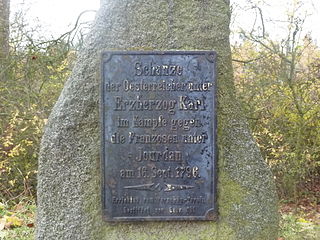
Sometimes called the Battle of Limburg or Second Battle of Altenkirchen or Battle of the Lahn, this was actually a single-day battle followed by a lengthy rear-guard action. The action occurred during the War of the First Coalition, part of a wider conflict known as the French Revolutionary Wars. Limburg an der Lahn is located in the state of Hesse in Germany about 31 miles (50 km) east of Koblenz. On 16 September, the Habsburg Austrian army commanded by Archduke Charles, Duke of Teschen attacked a Republican French army led by Jean-Baptiste Jourdan in its positions behind the Lahn River. The unexpected collapse and withdrawal of their right flank on the evening of the 16th compelled the French to make a fighting withdrawal that began in the evening of the 16th and continued until late on 19 September.

The Battle of Courtrai saw a Republican French army under Jean-Charles Pichegru oppose Coalition forces commanded by François Sébastien Charles Joseph de Croix, Count of Clerfayt. The battle was fought as part of French efforts to defeat an Allied attempt to recapture Courtrai, which the French captured in the opening days of their 1794 offensive in the Low Countries. On 10 May, a French attempt to advance east toward Tournai was turned back by the Duke of York's troops in the Battle of Willems, but resulted in York himself retreating to Tournai once he realised he had underestimated the size of the French army. On the same day as Willems, Clerfayt attacked Courtrai from the north but made little progress. On 11 May, with York's retreat, French forces turned on Clerfayt at Courtrai after York's retreat and forced him to retreat to the north. As a result of the battle, the French Army of the North maintained their grip on Courtrai and Menin which it had won in late April. The fighting occurred during the War of the First Coalition near Kortrijk, Belgium, located about 85 kilometres (53 mi) west of Brussels.

The Waterloo campaign commenced with a pre-emptive attack by the French Army of the North under the command of Napoleon Bonaparte. The first elements of the Army of the North moved from their peacetime depots on 8 June to their rendezvous point just on the French side of the Franco-Belgian border. They launched a pre-emptive attack on the two Coalition armies that were cantoned in Belgium—the Anglo-allied army under the command of the Duke of Wellington, and a Prussian army under the command of Prince Blücher.
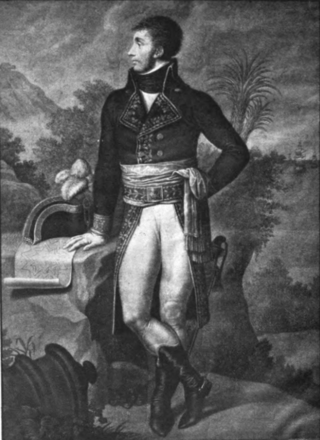
Jean Hardy commanded a French division during the French Revolutionary Wars. In 1783 he enlisted in the French Royal Army. In 1792 he joined a volunteer battalion and fought at Valmy, earning promotion to major. After leading a battalion at Wattignies and successfully holding Philippeville in 1793, he became a general of brigade. In 1794, he led troops in the Army of the Ardennes at Boussu-lez-Walcourt, Grandreng, Gosselies and Fleurus.
Éloi Laurent Despeaux commanded a combat infantry division during the French Revolution. He joined the French Royal Army in 1776 and became a non-commissioned officer by 1791 when he reentered civilian life. The following year he joined a volunteer battalion and fought at Jemappes. He was badly wounded at Famars in May 1793 and was appointed general of brigade in the Army of the North in September that year. After being wounded again he was promoted general of division in March 1794.
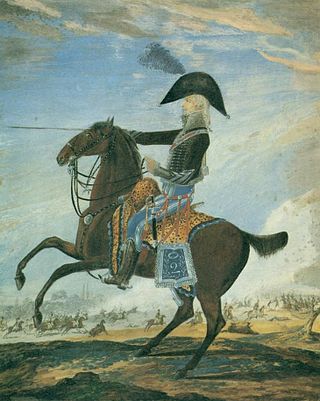
Charles Étienne de Ghigny commanded a Kingdom of the Netherlands light cavalry brigade at the Battle of Waterloo. He joined a French light cavalry regiment in 1792 and served in the same regiment for 22 years, becoming its lieutenant colonel in 1806. He fought in the Peninsular War in 1810–1811 and in the latter year became colonel of the regiment. He fought in the 1812 French invasion of Russia, the 1813 German Campaign and the 1814 French Campaign. In 1814 he led a cavalry regiment at Fère-Champenoise and Paris. He changed his allegiance to the Netherlands in 1815 and was appointed major general. He was promoted to lieutenant general in 1826. He switched allegiance to the Kingdom of Belgium in 1831 and received the Order of Leopold in 1837.

Jean-Baptiste Olivier enlisted in the French Royal Army as foot soldier in 1781. During the French Revolutionary Wars he was promoted general of brigade, fighting at Kaiserslautern, Fleurus, and Neuwied. He famously observed the action at Fleurus from a hot air balloon. In 1799 he transferred to the Army of Naples as a general of division. He fought at the Trebbia where he was severely wounded, losing a leg. During the Napoleonic Wars he held military commands in the interior and was appointed Baron of the Empire and Grand Officer of the Légion d'honneur. He died in 1813. Olivier is one of the names inscribed under the Arc de Triomphe.





















